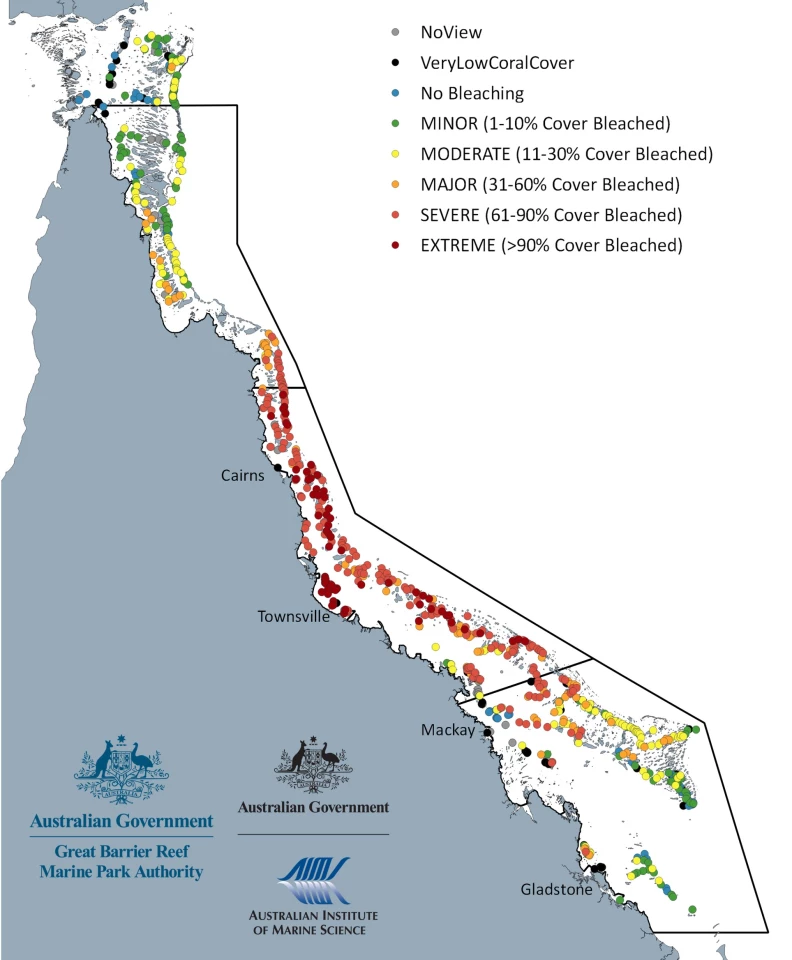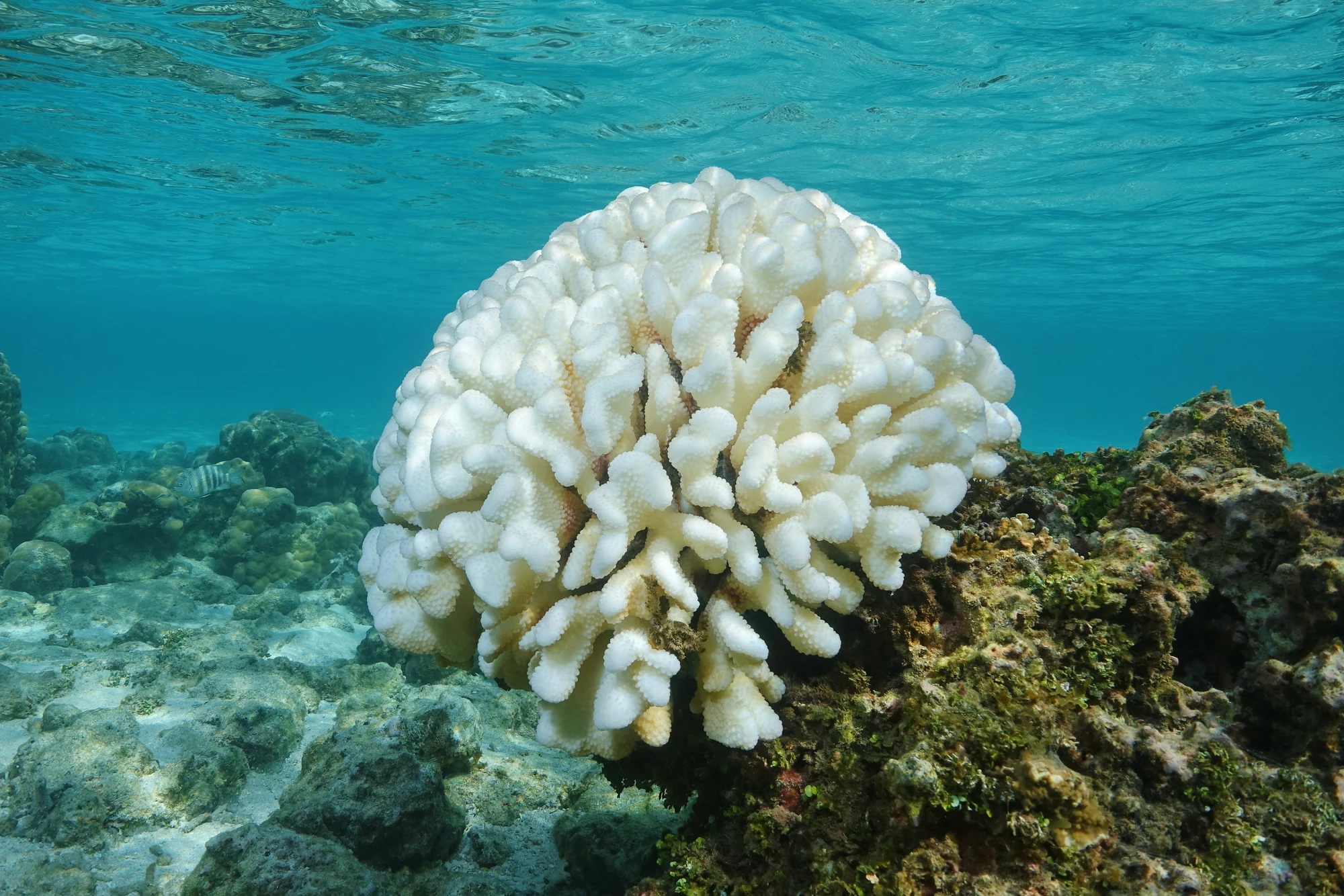Rare coral bleaching brought on by abnormal sea temperatures is rapidly becoming the norm on Australia's Great Barrier Reef, which has just experienced its fourth such event in six years. The mass bleaching is said to have affected more than 90 percent of reefs making up the system, and is the first to ever occur in a La Niña year.
Coral bleaching takes place when abnormal sea conditions, such as warmer waters, sees coral expel the algae that live in their tissues, providing them with nutrients and their famously colorful appearance. Without the algae, the corals turn white and are left susceptible to death and disease. Those that experience only mild or moderate bleaching have a good chance of recovery, but repeated bleaching events that strike in quick succession leave little chance for reprieve.
The Great Barrier Reef is known to have endured mass bleaching events in 1998, 2002, back-to-back events in 2016 and 2017, and then again in 2020. A new report from Australian government scientists reveals it has now experienced its fourth mass bleaching event in just seven years.
Waters across the reef system started warming in early December of 2021 and rose above the historical maximums usually seen across the local summer months. The heat continued to build until April 2022, including three heatwaves across the central and northern sections. As reports of bleaching continued to increase, scientists at the Great Barrier Reef Marine Park Authority undertook reef-wide aerial surveys, which revealed the extent of the damage.

The team surveyed 719 reefs in all from helicopters and fixed-wing aircraft, and found that 654, or 91 percent of them, had suffered some degree of coral bleaching. This is the first mass bleaching event to strike the Great Barrier Reef in a La Niña year, when conditions are typically milder.
The scientists also note that the coral's response to heat stress can be drawn out, so while the current picture is a grim one, the bleaching may become even worse in the coming months before water temperatures cool and offer a chance for recovery.
"Climate change remains the greatest threat to the Reef," the scientists write in their report titled Reef snapshot: summer 2021-22. "It influences weather patterns and the ocean’s temperature, pH level and currents, as well as intensifying the effects of other threats. Climate change is escalating, and the Reef is already experiencing the consequences of this. Unfortunately, the events that cause disturbances on the Reef are becoming more frequent, leaving less time for coral recovery."
The full report can be accessed online here.





